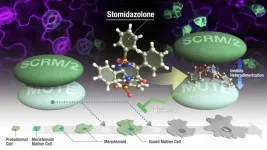The study, published today in Diagnostics, reveals that when athletes exhibit this movement, which Nowinski and senior author Dan Daneshvar, MD, PhD, Chief of Brain Injury Rehabilitation in the Department of Physical Medicine and Rehabilitation at Spaulding Rehabilitation and Harvard Medical School, have named a Spontaneous Headshake After a Kinematic Event or SHAAKE, athletes report they had a concussion 72% of the time. Among football players, the relationship was even stronger, with 92% of SHAAKEs associated with a concussion. A SHAAKE is usually initiated within seconds or minutes of an impact, involves lateral rotation side to side at a rate of 2 to 8 movements per second, typically lasts less than two seconds, and does not occur for another reason such as a form of communication.
Nowinski recognized SHAAKE as a concussion sign after Miami Dolphins quarterback Tua Tagovailoa’s controversial undiagnosed concussion during a game on September 25, 2022. After Tagovailoa’s head hit the ground, he rapidly shook his head side to side two separate times, before stumbling and collapsing. At the time, doctors attributed the collapse to a prior back injury, so he was not diagnosed with a concussion. Had Tagovailoa been diagnosed with a concussion, he likely would not have been playing in a game the following Thursday, where he lost consciousness after experiencing a suspected second concussion in four days and was removed from the field in a stretcher. Had SHAAKE been considered a sign of concussion, it would have provided doctors with additional evidence that his imbalance after the initial injury on September 25 was caused by ataxia due to concussion.
“Sports and medical organizations should immediately add SHAAKE to their lists of potential concussion signs,” Nowinski said. “Coaches, medical professionals, and concussion spotters should be trained to recognize when a SHAAKE happens and remove athletes for further assessment. It’s an easy change, with no downside, that could prevent catastrophic outcomes and save careers.”
For the study, 347 current and former athletes between the ages of 18 and 29 were surveyed. They were shown video examples of SHAAKEs and asked about their experiences with them. 69% reported exhibiting a SHAAKE, and 93% of those reported a SHAAKE in association with concussion at least once. Athletes reported exhibiting SHAAKEs a median of five times in their lives.
“In the athletes we studied, about three out of every four SHAAKEs happened because of a concussion,” said Daneshvar, who also serves as Co-Chair of Sports Concussion at Mass General Brigham. “Based on our data, SHAAKE is a reliable signal that a concussion may have occurred, like an athlete clutching their head after contact, being slow to get up, or losing their balance. Just like after these other concussion signs, if athletes exhibit a SHAAKE, they should be removed from play and evaluated for a potential concussion."
The three most common reasons athletes reported for exhibiting a SHAAKE were “disorientation or confusion” (25%), “a feeling like you needed to jumpstart your brain” (23%), and “changes to your perception of space or perception of your body in space” (14%). Other reasons athletes reported for exhibiting a SHAAKE associated with a concussion included headache, dizziness, inability to keep their train of thought, and changes to vision, hearing, or balance. Reasons athletes exhibited a SHAAKE that are not associated with concussion include neck pain, chills, pain that was not a headache, and an emotional reaction to the preceding event.
"Studies consistently show that an unacceptably high number of their concussions are not voluntarily reported by athletes, either because they don't realize they have a concussion or because, in the heat of the moment, they don't want to be removed from the game," said Robert Cantu, MD, CLF medical director and study co-author. "It is critical we take every potential concussion sign seriously to ensure the health and wellbeing of athletes."
The main limitation of the study is the potential for recall bias due to survey participants self-reporting prior concussions. Most respondents were from the United States and Canada, and it is unclear if SHAAKE varies by country or culture. Future prospective studies are needed to validate these findings.
These findings appear online in the journal Diagnostics.
Authorship: In addition to Nowinski, Cantu, and Daneshvar, study authors include Samantha C. Bureau (CLF), Hye Chang Rhim (Spaulding); and Ross D. Zafonte, DO (University of Missouri).
Conflict of Interest: Nowinski reported nonfinancial support (travel reimbursement) from the NFL Players Association (NFLPA), NFL, World Rugby, WWE, and AEW (All Elite Wrestling); he has served as an expert witness in cases related to concussion and CTE and is compensated for speaking appearances and serving on the Players Advocacy Committee for the NFL Concussion Settlement. He also serves as an advisor and options holder for Oxeia Biopharmaceuticals, PreCon Health, and StataDx outside the submitted work. Daneshvar serves as an expert witness in legal cases involving brain injury and concussion and serves as an advisor and options holder for StataDx outside the submitted work. He receives funding from the Football Players Health Study at Harvard University, which is funded by the NFLPA and evaluates patients for the MGH Brain and Body TRUST Center, sponsored in part by the NFLPA.
Additional disclosures can be found in the paper.
Funding: This research received no external funding.
About the Concussion Legacy Foundation:
The Concussion Legacy Foundation is a 501(c)(3) charity based in the United States with chapters in Australia, Canada, and the United Kingdom. It was founded by Robert Cantu, MD, and Chris Nowinski, PhD to support athletes, veterans, and all affected by concussions and CTE to promote smarter sports and safer athletes through education and innovation and End CTE through prevention and research. CLF is a proud supporter of and collaborator with the Boston University CTE Center. For more information, please visit ConcussionFoundation.org.
About Mass General Brigham:
Mass General Brigham is an integrated academic health care system, uniting great minds to solve the hardest problems in medicine for our communities and the world. Mass General Brigham connects a full continuum of care across a system of academic medical centers, community and specialty hospitals, a health insurance plan, physician networks, community health centers, home care, and long-term care services. Mass General Brigham is a nonprofit organization committed to patient care, research, teaching, and service to the community. In addition, Mass General Brigham is one of the nation’s leading biomedical research organizations with several Harvard Medical School teaching hospitals. For more information, please visit massgeneralbrigham.org.
# # #
END

